The history of the Soviet military space
In 1960-80-ies. In the USSR, several dozen tests of satellite fighters were performed. The last such test took place on 18 on June 1982. It was carried out within the framework of the largest exercises of the Soviet nuclear forces, nicknamed in the West as the "Seven Hour Nuclear War". The exercises, during which land and sea ballistic missiles, antimissiles, military satellites (including the interceptor) were launched, made an indelible impression on the leadership of the United States. The "Seven-hour nuclear war" gave irrefutable arguments to the US military and politicians who demanded that work begin on the creation of a new generation of anti-satellite and anti-missile systems in the United States.
President Ronald Reagan announced the decision to develop and deploy an anti-satellite system a month after the "Seven Hour Nuclear War" - in July 1982. Then, 23 in March 1983. Reagan proclaimed the Strategic Defense Initiative (SOI). This program was soon dubbed "Star Wars" in honor of the popular movie.
In the United States, work on the creation of combat space stations began in the early 70-s, before the announcement of the PIO program by Reagan. Offered the most exotic projects using kinetic, laser and beam weapons. For example, the possibility of placing a high-power X-ray laser into orbit was considered. Energy for him would provide a nuclear explosion. However, in reality, not everything turned out to be as simple as on paper. A series of tests of laser and beam weapons revealed a lot of problems that American scientists have not been able to solve until the official collapse of the work on SDI in 1993.
And what about the Soviet Union? In the middle of 70's. work on space weapons was launched at Energia, led by Valentin Petrovich Glushko. The leading role of "Energy" was issued by a special Resolution of the Central Committee of the CPSU and the Council of Ministers of the USSR "On the study of the possibility of creating weapons for conducting combat operations in space and from space."
In the official stories RSC Energia them. S.P.Koroleva, published in 1996 g, about these works said the following:
To destroy military space objects, two combat spacecraft were developed on a single constructive basis, equipped with various types of onboard weapons systems - laser and missile ..
The smaller mass of the onboard armament complex with rocket weapons, as compared with the laser weapons complex, made it possible to have a larger fuel supply onboard the spacecraft, so it seemed expedient to create a system with an orbital grouping consisting of combat spacecraft, one part of which is equipped with laser and the other rocket weapons. At the same time, the first type of apparatus was to be used on low-orbital objects, and the second - on objects located in medium-altitude and geostationary orbits .. "
It was decided to create both types of combat satellites developed by NPO Energia on one constructive basis. Based on the estimates of the mass characteristics of future combat systems, an orbital station of the 17K DOS type was chosen as the base platform. NPO Energia already had extensive experience in operating devices of this class. On the basis of this basic platform, as mentioned above, two combat complexes were developed:
17F19 "Skif" - a system involving the use of lasers
17F111 "Cascade" - a system with rocket weapons.
NPO Energia was the head organization for the entire program of space-based anti-satellite and anti-missile weapons. NPO Astrofizika, the leading Soviet laser company, has become the leading firm in the laser complex for Skif. The missile system for the Cascade was developed at the firm of AE Nudelman, the famous Soviet designer of weapons for airplanes and spacecraft. The Scythians and Cascades had to be put into orbit at the first (experimental) stage of the PH 8K82K Proton-K, and later the orbital ships 11Ф35ОК Buran. For a longer duration of combat duty, each of the types of these satellites had the opportunity to refuel, which the Buran ships were to provide. In addition, it was possible to visit the combat stations by a crew of two people for up to 7 days on ships of the Soyuz type.
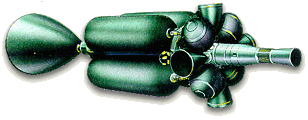 Rocket station "Cascade"
Rocket station "Cascade" The smaller mass of the Cascade missile weapons complex, compared to the Skif complex with laser weapons, allowed a larger fuel supply onboard the spacecraft, therefore it seemed expedient to create a system with an orbital grouping consisting of combat spacecraft, one part of which is equipped with a laser, and the other - with rocket weapons. In this case, the first type of spacecraft was to be used on low-orbit objects, and the second - on objects located in medium-altitude and geostationary orbits.
In order to defeat the launching ballistic missiles and their head units on the passive flight segment, a project of a space-based interceptor missile was developed for the Kaskad complex at NPO Energia. In the practice of NPO Energia, this was the smallest, but the most energy-armed rocket. Suffice it to say that with a launch mass of only tens of kilograms, the interceptor missile had a characteristic speed margin comparable with the characteristic velocity of the missiles bringing modern payloads to the satellite orbit. High performance was achieved through the use of technical solutions based on the latest achievements of domestic science and technology in the field of miniaturization of instrumentation. The author’s development of NPO Energia was a unique propulsion system using non-traditional non-cryogenic fuels and ultrastrong composite materials.
For orbital missile tests, it was decided to install them on Progress cargo transport ships. At the first stage in 1986-88. five flights of such ships were planned under the Cascade program. Production of these ships under the hull numbers 129, 130, 131, 132 and 133 began at the production base of NPO Energia - the Experimental Mechanical Engineering Plant (ZEM). However, before the flight test it never came.
For the destruction of particularly important ground targets, a space station was developed, the basis of which was the 17K DOS station and on which the autonomous modules with ballistic or planning type combat units were to be based. By a special command, the modules were separated from the station, by means of maneuvering they had to occupy the necessary position in outer space with the subsequent separation of the blocks according to the command for combat use. The design and main systems of autonomous modules were borrowed from the Buran orbital ship. As a variant of the combat unit, an apparatus was considered on the basis of the experimental model of the Buran OK (devices of the BOR family).
Combat space station. 1 - base unit; 2 - control center for combat units; 3 - reusable transport ship "Zarya"; 4 - combat station modules with sighting complexes; 5 - combat modules (based on the fuselage OK "Buran")
The combat module goes to the target.
The same basic module as on the Mir orbital station, those side (it’s no secret that the Spectr, for example, was supposed to test an optical missile launch detection system. A stabilized platform with television and cameras on the Crystal why not a sight?), but instead of the astrophysical "Quant" - a module with a complex of command and control. Under the “ball” of the transitional compartment is another adapter, on which hang four modules (based on the “Buranovskiy” fuselage) with combat blocks. This is, so to speak, the "original position". In alarm, they are separated and diverge into working orbits, chosen from the following consideration: so that each unit reaches its target at the moment when the control center will fly over it.
The “Burana” fuselage is used in this project on the principle of “not losing the good”: large reserves of fuel in the combined propulsion system and a very good control system make it possible to actively maneuver in orbit, while the payload — warheads, are in a container, hidden from curious eye, as well as the adverse factors of space flight.
What is significant in the context of strategic deterrence - this weapon system will deliver an aimed, “surgical” blow, even if everything else is destroyed. As nuclear submarines, she is able to wait out the first volley.
The military target load for the OK "Buran" was developed on the basis of a special secret decree of the Central Committee of the CPSU and the Council of Ministers of the USSR "On the study of the possibility of creating weapons for warfare in space and from space" (1976)
The warheads, which in essence were planning nuclear bombs, were to be placed compactly in the payload module compartment of the combat drums module with folded wing consoles in three to four successively installed ejection turrets.
The dimensions of the Buran payload compartment make it possible to place up to five warheads on each rotating ejection unit, as shown in the figure. Taking into account the possible lateral maneuver of each combat unit when descending in the atmosphere of at least plus / minus 1100 - 1500 km, one impact module could, in a short time, erase all life from the face of the Earth in a strip to the width of 3000 km with its twenty maneuvering military blocks.
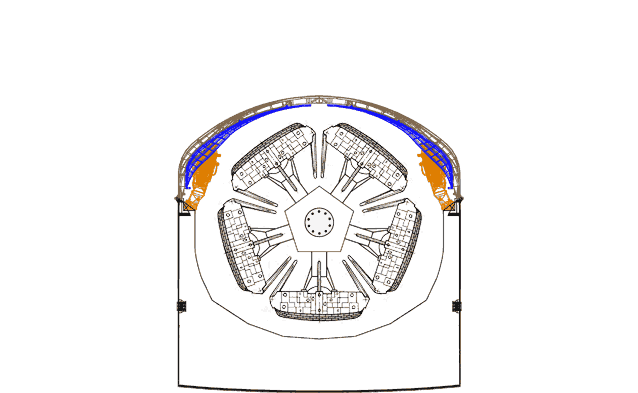
There is information about other military aspects of the use of orbital ships. In particular, in the framework of the “asymmetric response” to the American “Star Wars” program (SOI -
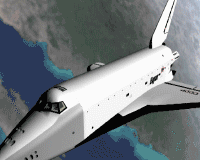 Strategic Defense Initiatives) addressed the issue of mining with the help of Buran near-Earth space with the creation of an insurmountable curtain for the space segment of the PIO. Moreover, in the USSR, research work was carried out with ground-based experimental testing to create orbital brisant clouds, which quickly and completely "wipe out" the entire near-earth space from spacecraft to altitudes of 3000 km. Of course, after this, the near-Earth space became completely inaccessible for several months, but these measures were supposed to be used only during (or immediately before) a full-scale military conflict between the USSR and the USA. And as you know, "the wood is chopped - the chips are flying" ..
Strategic Defense Initiatives) addressed the issue of mining with the help of Buran near-Earth space with the creation of an insurmountable curtain for the space segment of the PIO. Moreover, in the USSR, research work was carried out with ground-based experimental testing to create orbital brisant clouds, which quickly and completely "wipe out" the entire near-earth space from spacecraft to altitudes of 3000 km. Of course, after this, the near-Earth space became completely inaccessible for several months, but these measures were supposed to be used only during (or immediately before) a full-scale military conflict between the USSR and the USA. And as you know, "the wood is chopped - the chips are flying" ..However, much more advanced work on laser weapons. Therefore, the creation of space laser weapons should be described in more detail.
History of the project "SKIF".
The fight against ballistic missiles was too difficult a problem. Therefore, the customer, the USSR Ministry of Defense, decided to start the development of effective anti-satellite weapons first. After all, it is much easier to disable a spacecraft than to detect and destroy a flying warhead. Thus, in the Soviet Union, the so-called anti-SDI program was developed. This system was supposed to destroy future US military spacecraft, thereby depriving the United States of defense against nuclear missiles. These Soviet "killer" stations fit well within the framework of the USSR military doctrine, which provided for the so-called "preemptive retaliatory strike", according to which, first, the Soviet anti-SDI space stations were supposed to disable American SOI stations, and then the Soviet ballistic missiles to strike at enemy territory.
The solution was simple enough at first sight: to install on the spacecraft an already created and tested laser for testing it in space. The choice fell on the 1 MW laser setup, created by one of the branches of the Institute of Atomic Energy. I.V. Kurchatov. This gas-dynamic carbon dioxide laser was designed to be installed on IL-76 aircraft. By 1983, he has already passed flight tests.
The history of the aviation laser project is closely intertwined with the project of a space laser. Therefore, despite the fact that it lies outside the topic of the article, it is worth briefly to talk about it. In addition, the description of the IL-76 laser gives an idea of the laser for testing in space.
The combat laser was tested on an IL-76MD aircraft with a Soviet-86879 tail number (otherwise it was called IL-76LL with BL - a flying IL-76 laboratory with a combat laser). This aircraft looked original. To power the laser and related equipment, two AI-24BT turbo-generators with a power of 2.1 MW were installed on the sides of the nose. Instead of a standard weather radar on the nose, a huge bulbous fairing was installed on a special adapter, to which a smaller oblong fairing was attached below. Obviously, there was an antenna of the aiming system, which was spinning in all directions, catching the target.
Originally it was decided to place the laser gun: in order not to spoil the aerodynamics of the aircraft with another fairing, the gun was made retractable. The top of the fuselage between the wing and the keel was cut out and replaced with huge flaps consisting of several segments. They were removed inside the fuselage, and then climbed turret with a cannon. Behind the wing there were fairings with a profile similar to that of a wing protruding beyond the contour of the fuselage. The cargo ramp was maintained, but the cargo hatch doors were removed, and the hatch was sewn with metal.
Modification of the aircraft was performed by Tagonrog aviation research complex (TANTK) them. G.M.Beriev and Taganrog Machine-Building Plant named after George Dimitrov.
The spacecraft designed to mount a megawatt laser with an IL-76LL with a BL received the designation 17F19D "Skif-D". The letter "D" meant "demo". 27 August 1984 The Minister of General Engineering Oleg Dmitrievich Baklanov signed the order N343 / 0180 on the creation of the 17F19 "Skif-D". KB "Salyut" was determined by the head of its creation. The same order officially approved the program for the creation of subsequent heavy-duty military spacecraft. Then, by order for IOM N168 from 12 in May 1985, cooperation was established between enterprises manufacturing Skif-D. Finally, due to the fact that the anti-missile issue was one of the top priorities, 27 was issued on XFUMX January 1986. Decree of the Central Committee of the CPSU and USSR Council of Ministers N135-45. Not every Soviet spacecraft received such honor. According to this Resolution, the first launch into the Skif-D orbit was to take place in the second quarter of 1987.
Skif-D was primarily an experimental spacecraft, in which not only the laser, but also some of the regular systems of the following devices created under the “Soviet SDI” program were to be worked out. These were separation and orientation systems, a motion control system, a power supply system, an onboard complex control system.
The 17F19D device was also supposed to demonstrate the fundamental possibility of creating a spacecraft for destroying targets in space. To test the Skife-D laser, it was planned to install special targets that simulate enemy missiles, warheads and satellites. However, it was impossible to place such a powerful laser on the DOS station class apparatus. The exit was found quickly. By 1983, the "light at the end of the tunnel" with the PH 11K25 "Energy" became visible. This carrier could accelerate to a speed close to the first space, the payload weighing about 95 tons. It was in this mass that the apparatus with a megawatt aviation laser fit in.
In order to speed up the progress of work on Skif-D at Salyut, it was decided to make the most of the experience of the previous and ongoing works. The structure of the "Skif-D" includes elements of the transport ship TKS and the orbital ship "Buran", the base unit and the modules OK "Mir", RN "Proton-K". The device had a length of about 40 m, a maximum diameter of 4.1 m and a mass of about 95 tons.
Structurally, the first Skif-D (onboard number 18101) consisted of two modules rigidly interconnected: a function-service unit (FSB) and a target module (CM). The FSB, developed on the basis of the 11Ф77 functional ship 11F72 TKS, was used for the Skif-D additional development after it was separated from the PH: the unit added the necessary 60 m / s to the spacecraft to reach the reference low orbit. The FSB also housed the main service systems of the apparatus. For their power supply on the FSB installed solar panels from TKS.
The target module had no prototypes. It consisted of three compartments: a working compartment (ORT), an energy compartment (OE) and a special equipment compartment (OCA). In ORT, cylinders with CO2 should be placed to power the laser. The energy compartment was designed to install two large electric turbine generators (ETG) in it, with a capacity of 1.2 MW each. The OCA housed the combat laser itself and the guidance and restraint system (SNM). To facilitate the aiming at the laser target, it was decided to make the head of the OCA turning relative to the rest of the device. In the two side blocks of the OCA should have been placed targets for testing as SNU, and combat laser.
However, the creators of "Skif-D" are faced with a number of technical problems. First, it was completely unclear whether a gas-dynamic carbon dioxide laser would be launched into orbit under vacuum and zero gravity conditions. To deal with this problem at the plant them. MV Khrunichev was decided to create a special test bench. The stand occupied a huge territory and included four 20-meter vertical cylindrical evacuation towers, two 10-meter ball tanks for the storage of cryogenic components, an extensive network of large diameter pipelines. Until now, these buildings on the territory of the GKNPTs them. Mv Khrunichev is reminded of the former program of the "Soviet IDF".
Gas dynamics of a megawatt laser caused many problems. With his work was very high consumption of the working gas (CO2). The gas jet emanating from the laser caused a disturbing moment. To prevent it, they decided to develop an instant exhaust system (SBV). A special pipeline, nicknamed "pants" for its appearance, went from the laser to the energy compartment. There was installed a special exhaust pipe with gas rudders to compensate for the disturbing moment. SBV developed and manufactured NPO them. S.A. Lavochkin.
Serious difficulties arose in creating a system of power supply of the laser, in particular - ETG. With their trials there were cases of explosions. The work of the generator turbines also caused large disturbing moments on the apparatus.
The Skif-D motion control system was very complicated. After all, she had to make targeting the rotary head and the entire apparatus at the target, while compensating for disturbances from the work of the generators, from the exhaust of gases from the laser, and from the turns themselves very heavy, but at the same time very quickly rotating head of the OCA. Already in 1985, it was clear that one test spacecraft launch would be required only for testing all these auxiliary systems. Therefore, it was decided to launch the Skif-D1 product into orbit without a combat laser, and only to fully equip the Skif-D2 with a “special complex”.
The project "Skifa-D" elm in all these problems and difficulties. Designers of the Salyut Design Bureau have stumbled upon ever new and intractable tasks. Of course, over time, they could be overcome, but not in the time frame that established the orders of the IOM and the Decisions of the Central Committee and the Council of Ministers. At the end of 1985 g, considering the plans for 1986-87, the launch of Skif-D1 N18101 was planned for June 1987 g, and Skif-D2 N18301 with laser - on 1988 g.
Following Skif-D in the Salyut design bureau, it was planned to create an XnUMXF17C Skif-Stilet apparatus. It was also a heavy-class apparatus, designed for launch on the Energia. 19 December 15 was signed by the order of IOM N1986 on the direction of work in 515-1987, where Skif-Stilett also appeared. On this device they were going to install the onboard special complex (BSK) 90K1 "Stiletto", developed in the NGO Astrophysics.
The Stiletto for 17F19C was a cosmic version of the Earthly Stiletto, already created and tested in the 80-ies. It was a "ten-barred" installation of infrared lasers operating at a wavelength of 1.06 nm. However, the ground "Stiletto" was not intended to destroy or destroy enemy equipment. This simply did not allow the atmosphere and energy. Lasers were designed to disable sights and sensors of optical devices. On Earth, the use of "Stiletto" was ineffective. In space, due to vacuum, its radius of action increased significantly. “Stiletto - space” could be used as an antisatellite tool. After all, the failure of the optical sensors of the spacecraft of the enemy was equivalent to the death of the satellite. To increase the effectiveness of the Stiletto in space, a special telescope was developed. In September 1986 of the Stiletto electric model was made by Astrofizika NPO and delivered to Salyut Design Bureau for testing. In August, a bench prototype of a telescope housing was made on 1987.
In the future, it was planned to develop a whole family of various heavy-class devices. There was the idea of creating a unified 17F19U "Skif-U" space complex based on a heavy-class platform under the Energia rocket launcher.
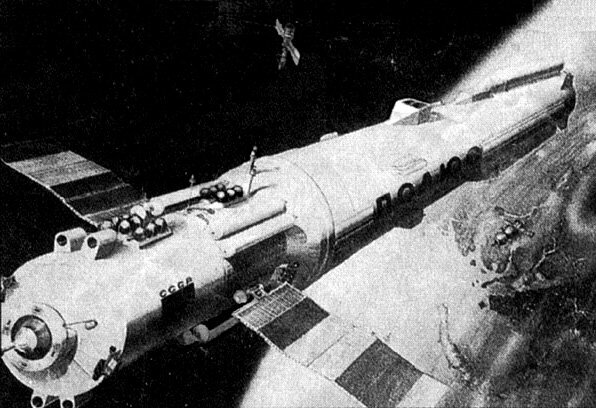
Practical implementation of the project.
In the middle of 1985, the preparation for the first launch of the 11K25 "Energy" 6СЛ entered the final stage. The initial launch was planned for 1986 year. Since the Buran orbital spacecraft was not yet ready, the Ministry of General Engineering decided to launch the Energia rocket with the 100-tonne spacecraft model as a payload. In July, 1985, the General Designer of the Design Bureau Salyut, DA Polukhin, assembled the management team of the company and announced that the Minister of General Engineering, OD Baklanov, had set the task of creating an 100-ton mock-up for the Energia tests. The layout was supposed to be ready by September 1986.
After all the adjustments to the design task, the design of the Skif-D mockup unit or 17F19DM Skif-DM appeared. 19 August 1985. The corresponding order N295 signed by Baklanov was issued.
The 17F19DM Skif-DM flight copy consisted of two modules: FSB and CM, had a length of 36.9 meters, a maximum diameter of 4.1 meters, and a mass of 77 tons along with the head fairing.

By the time of the development of "Skif-DM" in the NGO. S.A. Lavochkina was almost ready system of momentless exhaust. Therefore, it was decided to install SBW on 17F19DM for testing gas dynamics and determining the magnitude of the disturbing moment at the gas outlet from it. However, if carbon dioxide were used for this, the appointment of Skif-DM would become too obvious to foreign analysts. So, for the tests, they chose a mixture of xenon and krypton. This mixture made it possible to conduct an interesting geophysical experiment — to study the interaction of artificial gas formations with the Earth’s ionospheric plasma. Such a cover for CBF testing was more or less convincing.
It was realistic to prepare for September 1986 and the systems used to direct the Skif-D laser at the target and to hold the target in sight. Guidance was carried out in two stages. At first, the on-board radar station (BRS), developed at the Moscow Research Institute of Precision Instruments, was used for gross guidance. Then precise targeting was carried out by the guidance and holding system (SNU), using a low-power laser for this. The Radiopribor Kazan software company, Kazan, was the leading identification system company in the USSR. For data processing from the radar and SNU and the joint operation of these systems with the executive bodies of the traffic control system in the SKIFA-DM system, the Argon-16 BCM, similar to the same BMVM on the Mir base station, was used. To calibrate the sensors of the SNU and test this system, it was decided to use detachable targets (such as balloons and corner reflectors). Such targets were used when conducting military-applied experiments using the Pion complex on the Cosmos-1686 TKS-M in 1985 and were developed for the Spectrum complex of the Mir station. Barium plasma generators were installed on inflatable targets to simulate the operation of ballistic missile engines and satellites.
Outside, the entire Skif-DM had a special black coating. It was supposed to provide a temperature regime of the apparatus. There were too few fuel-generating devices inside the target module "Skif-DM". Therefore, it was necessary to maximize the use of solar heat for heating. Black coating allowed it to do. Ten years later, the same coverage was used for the same purpose on the Zarya Energy Module (FGB) 77KM N17501 for the International Space Station.
Once again it is necessary to emphasize in order to dispel the mass of rumors about the "Pole" / "Skif-DM": there was no combat megawatt laser on it, just like the electric turbine generators ensuring its operation! And yet, no defeat from the Skif-DM board of the targets being shot was supposed to be: they simply had nothing to strike!
The complex consisting of the 11K25 "Energia" N6SL PH and the 17F19DM "Skif-DM" N18201 SV was designated 14А02. The main task for Skif-DM was the verification of the principles of creating a 100-tonne class spacecraft derived by the 11K25 Energia rocket. The experience of creating the 17F19DM should have come in handy in subsequent work on heavy-class devices. For the first time in the domestic space program the payload was located asymmetrically on the rocket, from the side. A number of new systems were created with the development of new technologies and the development of new materials. A new cooperation of enterprises was also created, which in the future was supposed to work on the "Soviet SDI". In addition to the Salyut and Plant them. MV Khrunichev in the creation of "Skif-DM" was attended by 45 enterprises of the Ministry of General Engineering and 25 enterprises of other industries.
However, during the work on the Skif-DM project, the initial test program was significantly curtailed. And the reasons for this were not at all technical. By this time, the "perestroika process went" in full swing. Mikhail Gorbachev, who became Secretary General, purposefully used the thesis on peaceful space and repeatedly publicly reviled the American PIO program and plans to militarize space. And under the influence of these new trends in the upper echelon of the party power there was a group that opposed the demonstration of the flight capabilities of the prototype orbital laser station.
On the basis of political decisions, the State Commission for the launch of Skif-DM in February 1987 canceled in the program of the flight of the device all shooting targets, testing radar and SNU, the release of xenon-krypton gas mixture through SBV. They decided only to bring Skif-DM into orbit, and in a month to bring it into the atmosphere over the desert region of the Pacific Ocean. What would have been thought in the United States about such a huge, but silent apparatus is difficult to say. Perhaps there would be no less suspicion than in the case of shooting targets and ejection of gas clouds. Now, the Skif-DM flight program included only ten of the most “innocuous” experiments: four military applied and six geophysical.
And just a few days before the scheduled launch of 11 in May, 1987, Gorbachev, flew to the spaceport. 12 May he became acquainted with samples of space technology, including military. As a result, the General Secretary of the CPSU Central Committee was very pleased with what he saw and heard. The time of the visit-conversation with the guests was twice as long as it had been. In conclusion, M.S. Gorbachev complained: "It is a pity that he did not know all this before Reykjavik!"
13 May, Gorbachev met with military and civilian workers at Baikonur at the Palace of Officers. Gorbachev spoke for a long time, praised the cosmodrome workers and the creators of space technology. He did not hurry with the start of Energia, suggested that he first look into all the problems and only with full confidence to launch such a complex and expensive system. And he said:
"... Our policy of peaceful space is not a sign of weakness. It is an expression of the peace-loving foreign policy of the Soviet Union. We offer the international community cooperation in the exploration of a peaceful space. We oppose the arms race, including in space ... Our interests are here coincide with the interests of the American people, and with the interests of other nations of the world.They do not coincide with the interests of those who are doing business in the arms race, want to achieve military superiority through space ... Any sort of ranting about protection from nuclear Weapons are the greatest deception of nations. It is from these positions that we assess the so-called Strategic Defense Initiative, which the US Administration seeks to implement ... We are categorically opposed to transferring the arms race to space. We see our duty in showing the serious danger of PIO to all the world ... "
After that, the fate of Skif, and the entire program for the development of military-space systems, became clear. And the failure that occurred at the launch of the apparatus, which prevented its entry into orbit, accelerated the closure of work on this program.
Work on the 17F19D Skif-D1 N18101, which started at the end of 1985 at the end of 1987 in June, was still continued in Salyut Design Bureau. However, after the loss of interest in the program from the country's leadership, they began to allocate less for the program , the timing of the launch began to move away. Only at the beginning of 1987, for the "Skif-D1" at ZiH, the sections of the AFU, PSV, PSN, bottom fairing, PGO hull, ODU and side blocks of the target module were made. The corps of the remaining regular compartments of the target module was planned to be made by the fourth quarter of 1987.
Problems also arose with the creation of a guidance and retention system and a photo-optical tracking system in the Kazan-based NPO Radiopribor. In this regard, First Deputy Minister of General Engineering V.Kh. Dogugiyev still 20 of April 1987 signed a decision to postpone the delivery of stand-alone sets of SNU and SSFO to 1989 g, and the standard set to 1990 of the city. Given these dates, the Skif-D1 could be ready only by the end of 1991. Problems with his systems could not be solved. According to the chief designer of this topic, Yu.P. Kornilov, the specialists who worked on Skif approached this device with the purely oriental philosophy of Khoja Nasredin: by the time the Skif-D was ready, or the emir will die, or - donkey. "
So, in principle, what happened. In September, 1987 of the work on the topic 17F19D in the Salyut and ZiHe design bureaus were suspended, but they did not resume. "New thinking" in international relations and at the same time the crisis that began in the Soviet economy led to the complete cessation of funding for the topic of heavy military orbital stations in 1989. The end of the cold war also led to the decline of the Soviet "star wars."
And in May 1993, all work on the Energia and Buran OK was stopped. This was the last point in the history of the creation of the Empire's sword.
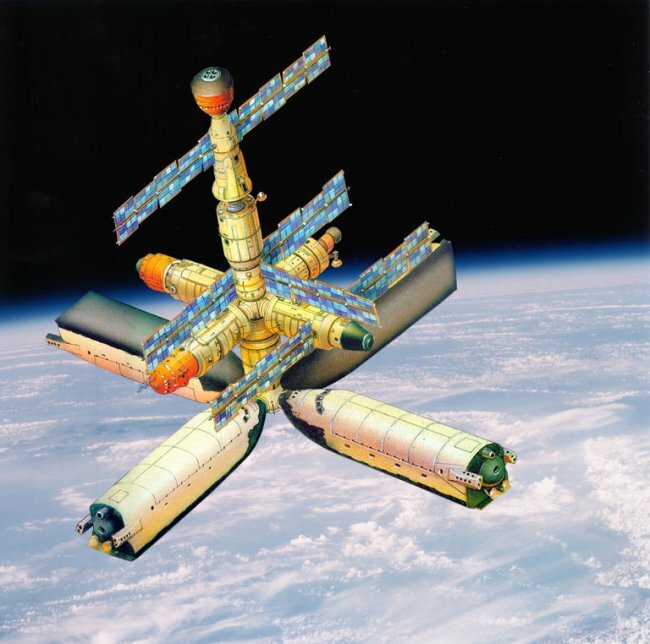
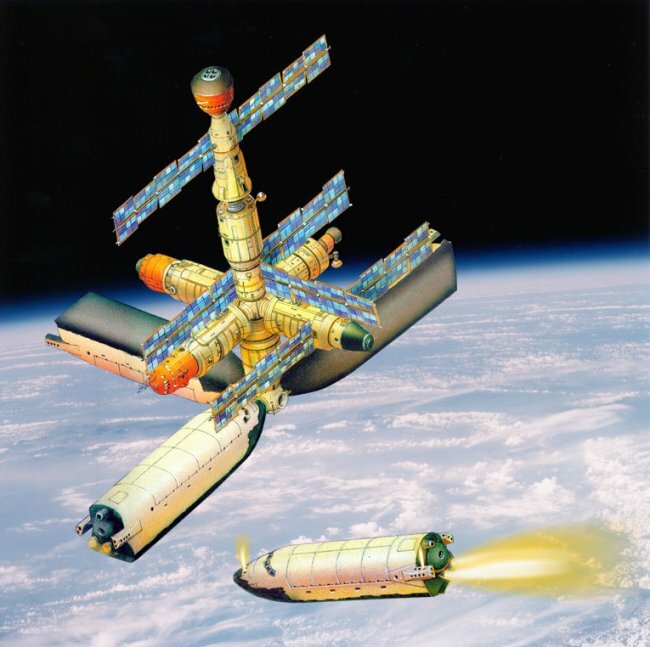
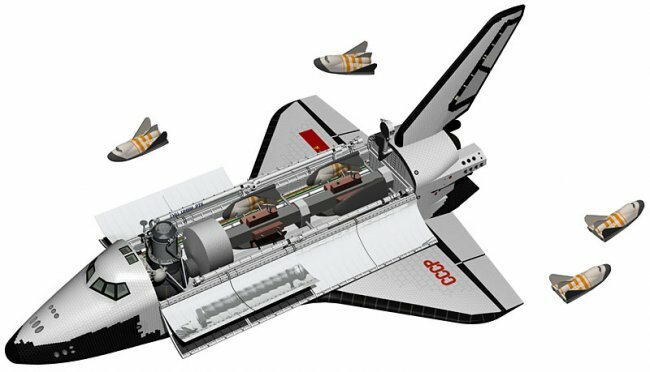
Information